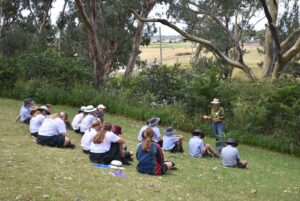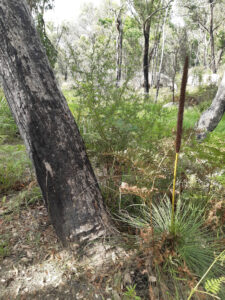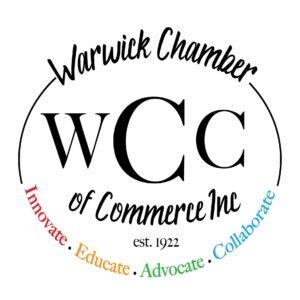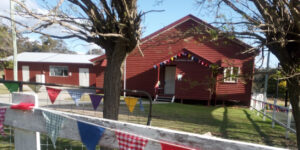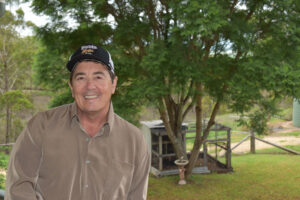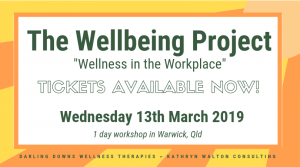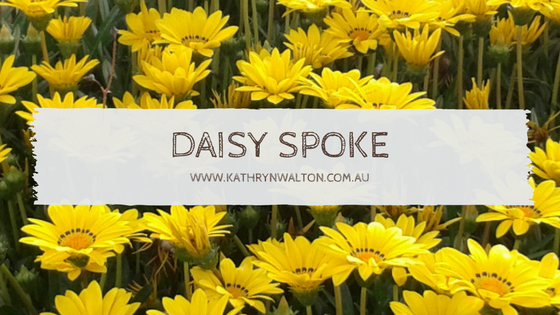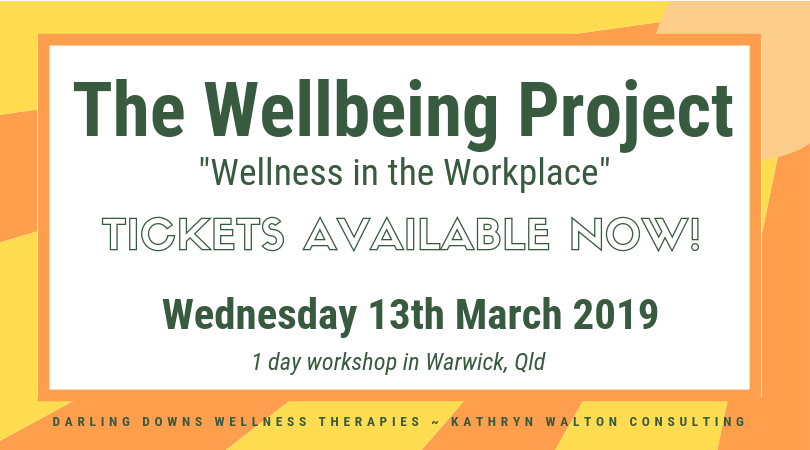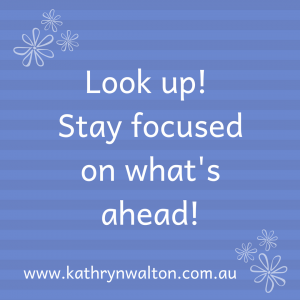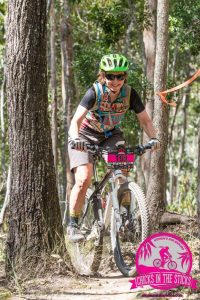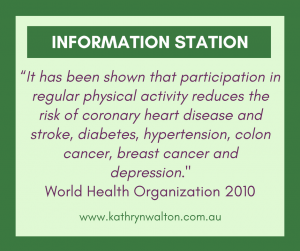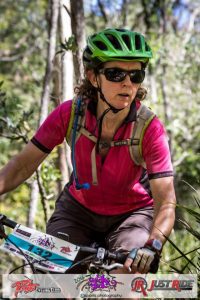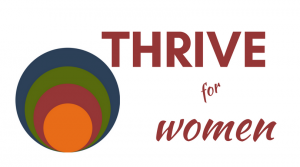Transcript from the podcast “Speak Out Loud: Stories of Strength from the Southern Downs”
SEASON 2: EPISODE 11
GUEST: Liz Fama’aea
PUBLISHED: 3rd April 2022
[00:00:00] Liz: We have honey eaters and little finches and wrens. And they all sort of hang out in this little gang. It’s really interesting because I didn’t realise, you know, how much birds all mix, even though they’re different species and completely different birds. And so you’ll get this little gang of about two families of finches and then a couple of families of Superb Wrens. They all come roaring through the garden eating the insects, eating whatever’s hanging around on the flowers. It’s really good to see that recovery of the bush after such devastation. I guess it made us all slowly feel a bit better.
[00:00:37] Kathryn: Today’s story on the podcast comes from Liz Fama’aea who joined me to share how valuable it is to be connected with your community. Liz had grown up in Stanthorpe and she was motivated to move back with her family into the area a few years ago so that they could reconnect and benefit from the support of the community. She has a really interesting story to share about the damage that her home and property sustained during the September 2019 bushfire as well as the incredible recovery journey of the landscape and the community which was reflected in the recent Hope and Growth Photo Exhibition.
Welcome to the podcast Liz.
[00:01:28] Liz: Thank you for having me.
[00:01:30] Kathryn: Can you share with our listeners what your connection is with the Southern Downs?
[00:01:34] Liz: I’ve lived here on and off since I was about seven. I think that’s when my family moved here. And I guess have mostly grown up here with my sisters and, you know, moved away as a lot of us do to study and work. Moved back briefly to have my children have my first two. And then moved back when they were starting high school. I think a lot of us do that. A lot of us move back. At some point you start to see the differences when you’re not as much part of a community and when you bring them back, it’s almost like this big sigh of relief, Oh, that’s what we were missing. And within six months they were back building cubbies outside and they were back doing mostly sport based activities or outdoors stuff and going fishing and they were enjoying life a lot more. They were a lot more relaxed and we were a lot more relaxed too. I think the presence of my parents as well really helped and just in general, the community of people that we’d all known as kids that embraced our kids as well. So I guess we moved back for the community and the community’s become fairly quickly a big part of our lives. And that’s really nice. Yeah. My husband also grew up here. He I think spent a little less time as a child in the community cause his parents moved away, but he’s from the Solomon Islands. And so, for him growing up in the Solomon Islands, he had this really close knit community of relatives and extended family that he lived with, and then coming to Australia, Stanthorpe was probably, he says, it’s the closest thing he’s had to the community that he had over there. So for him moving back here was really important as well, because this is the first place they came to in Australia and having a community of people who knew him since he was a child, and then also knew the boys. So for both of us, I guess, moving back here, um, and reconnecting with the people that had always supported us and seeing how they also supported the kids as they were growing up. That was really lovely. Yeah.
[00:03:40] Kathryn: You’ve been the official photographer for the community photo exhibition called Hope and Growth. Could you comment on how that exhibition celebrated the recovery journey and the growth following the bush fires that came through this region in 2019 and 2020?
[00:03:59] Liz: Oh, wow. That was, um, that was just such a wonderful thing to be a part of, I guess, one of the things that I really enjoy about being a photographer, and one of the reasons that I became a photographer to begin with, is the opportunity to sort of bear witness and record events that are deeply personal to both to people and to our community. And to see everyone being able to express their memories and their feelings and I guess the many things that Stanthorpe has been through as a community, through the photography that they’d done, that was really important. I think hearing people talk about their memories and one photograph, you know, would bring up different memories for each person. So you’d have the photographer talking to the firies or the neighbours or their Mum about the things that had happened that day. I think that was just really special. And that’s, I guess what I tried to capture in the photos that I took.
[00:05:04] Kathryn: And you have your own story of the bush fire that came through in September 2019. Is there part of that story that you’d like to share with the listeners as well?
[00:05:14] Liz: So I didn’t actually enter any of my own photos in the exhibition and I didn’t actually take many photos of the bushfire. I definitely didn’t get my camera out and do the professional photography bit. Sometimes I like to not take photos of things. Sometimes I like to try and remember them without having to record it officially. Being a photographer at times, everything becomes about capturing the moment, capturing, you know, evidence of what happened. And it’s not the same as experiencing it. It’s not the same as being in that moment and being fully present. When you’re photographing, you’re thinking about light and you’re thinking about exposures and you become a little clinical in your approach to things. So during that time, I actually didn’t take many photos because it was such a shock too. We had the bushfire come right up to our house. We’d had a plastic tank at the back of the house that melted and actually stopped some of the house from burning. We had a little shed at the back of the house and that had pretty much exploded. We’re still finding bits of melted metal all through our driveway. The tank was right next to it. Because of the drought, we’d been very careful with our water and that tank was full of water cos that was like our reserve. And yeah, the water in that tank stopped the house burning down. So that was pretty amazing to have that happen. We bought the house not long before the bush fire and we were still unpacking. I haven’t seen those sort of conditions at any of the properties that I’ve lived on, where everything is so dry from the drought and the wind was so high. We have had other catastrophic bushfires that have similar in the past. I guess it’s always a threat. It’s always a risk that we think of when we do anything. When we build a house, when we expand our garden, we’re always, you know, looking at it going well, you know, that tree is probably a bit too close to the house. And the trees near my house are trimmed and, a fair way back from the house. The ones that are close to the house have obviously been kept low and that was another thing that saved our house.
[00:07:24] Kathryn: You said that you’d only recently moved into the house just before the bushfire came. Had you had the opportunity to do any preparation to bush fireproof the property before the bush fire actually came through?
[00:07:39] Liz: I guess not really apart from the mowing. I think the previous owner had lopped some of the trees near the house and that really helped. But I didn’t see many of the trees right near the house actually burn. You can see on the tree behind you that there’s burn marks all the way up the trunk still, you know, it’s still shedding bark. It’s an apple gum, so it doesn’t shed bark as easily as some of the others. And that actually still had all its leaves on it. So the leaves didn’t catch fire. The bushfire sort of went around the house. But came up through the yard with the embers. And I think, you know, like a lot of houses, the mulch around things caught fire. But we hadn’t really had a chance to do much in the way of bushfire prep. We’d been, you know, just surviving the drought and I guess more focused on that. And we hadn’t been in the property long enough to really look at the bush and take out the dead wood.
[00:08:32] Kathryn: So here we are about two and a half years later. I think. What sorts of things have you done since the bush fire? obviously there was a bit of cleanup to do from what you were describing there. What other things have you done keeping in mind that you’re in a bushfire prone zone?
[00:08:51] Liz: For us it’s a case of just continuing to do what we’d already planned to do. We probably want to get more tanks put in like a lot of people would. Probably the first thing we did was try and drop the dead trees near the house. There were quite a few dead trees after the bushfire. We still have heaps sort of acres and acres of dead trees. So we’ll never get into all of that, but just trying to drop the dead trees near the house. We’re continuing to monitor the bush and keep dry grass away from the property. There’s not much you can do once you’ve got lovegrass and lovegrass is one of the biggest things that speeds up that onslaught of the fire. So in the backyard here, you can see, you know, I’ve got a bit of lovegrass around us right now, but, we’ve been working on actually removing as much as we can from around the house and replacing that with other grasses and especially the native grasses. I’ve seen a lot of native grasses come back since the bushfire. And just trying to fight the lovegrass a little bit so that the native grasses can have a chance.
[00:09:57] Kathryn: What other changes have you seen in the land around you following the bushfire as it’s gone into recovery as well?
[00:10:04] Liz: Oh, look, that was the most amazing thing. Before the bushfire, I’d been looking at the property and going Well, you know, compared to properties that I’d grown up on, there was not a lot of diversity in the vegetation. There was umm eucalypts and a few wattles of mostly the one variety. And I was looking at it going, you know, there’s no Hardenbergias, there’s no little ferns and there’s not a lot of insect life either. So I was thinking about how to do something about that and how to, um, bring some of those plants back in. And then the bushfire happened and I have seen this explosion of growth all around the house, all through the bush. I’ve seen stuff growing that I’ve never seen before. It’s just been incredible. So we’ve had everything change so quickly after the bush fire. bush right now has about four or five different types of wattle growing back. And that’s of course, you know, one of the things that happens first after bush fires, your wattle just explodes. So I’ve got these different wattles growing and then the smaller plants that have grown back have been amazing. So all of these little seeds that were just sitting there waiting, all came out and then after that the drought broke, you know, we had this incredible rain and it’s all just gone completely nuts. And all of our bird life changed as well, as well as a lot of our wildlife. I think from looking at things, the possums have been the slowest to recover. I have not seen many of those possums returning. I’m sure they’re still around there. There’s probably a lot more food for them, so they’re not coming close to their, our houses anymore, but the bird life has been, as you can probably hear the bird life has been incredible. It’s all changed. We’ve got different birds to what we had beforehand. We used to have a lot of parrots, a lot of different types of parrots come through. And that changed. They stopped visiting the house. A lot of birds did not visit at all. There were no birds anywhere for about six months, a good six months after the bush fire. I think there was just, a lot of them unfortunately wouldn’t have made it. And a lot of them would’ve just had to go elsewhere because there was nothing. It was just like a desert all around us. That was quite difficult because everything was just dead, you know, it was just, um, sand and dead trees and rocks. And that’s what it felt like so, after everything started to grow back, we, we planted a lot. We put a lot of work into the garden around the house, and we’ve planted a lot of, I guess, fast-food type plants, around us right now. We’ve got pineapple sage and that’s really brought the birds, some different salvias and I’ve let a lot of weeds grow, which sounds, it sounds really weird, but a lot of the weeds even the introduced ones that come in are really important for soil regeneration, and also food for the birds. So there’s one that I think is called ink weed. It’s got lots of spikes of black and purple berries, and I saw a lot of birds getting through winter on that. The little black cypresses that grow all through the bush, they’re actually a really important food source for a lot of parrots so we were lucky to have some of those survive and we saw our Rosellas start to come back to feed on the seeds from those guys. And now we’ve got this incredible bird life where we have honey eaters and little finches and wrens. And they all sort of hang out in this little gang. It’s really interesting because I didn’t realise you know, how much birds all mix, even though they’re different species and completely different birds. And so you’ll get this little gang of about two families of finches and then a couple of families of Superb Wrens. They all come roaring through the garden eating the insects, eating whatever’s hanging around on the flowers. It’s really good to see that recovery of the bush after such devastation. I guess it made us all slowly feel a bit better.
[00:14:06] Kathryn: Before we started recording our conversation Liz, you were pointing out to me the native bees as well.
[00:14:12] Liz: Ah, yes. When everything was so dead, there would be bull ants. And I actually found a lot of trapdoor holes that I hadn’t realized was there because they were all covered in vegetation, you know, so all around us, although, you know, don’t want to alarm you, but there are little trapdoor spiders living all through the undergrowth and they survived, which is really good. But we’ve got a lot more insect life now, which is wonderful to see. We’ve got the native bees, the little blue banded bees, they’re all through the pineapple sage, and all the natives that are growing back. I think we’re told that natives are quite short, lived plants and people think of something like a wattle. It’s just going to grow overnight and be quite quick to flower. And that’s not actually the case. What I’m seeing with a lot of the wattles growing back that most of them haven’t flowered yet. The variety we’ve got here hasn’t flowered at all yet. Some of the smaller wattles that I’ve seen growing in other areas, they’ve already flowered a couple of times, but the majority of our wattles haven’t, so there hasn’t actually been a lot of the mass food that those insects would rely on and they’ve come into our garden and are taking advantage of our little introduced plants. And I’ve been really happy about that. So that hopefully as the wattles and start to flower, they can move on to those and the populations can recover.
[00:15:38] Kathryn: Some really exciting changes happening there.
[00:15:41] Liz: So it makes me think, Oh, I wish I knew more about how all of the little ecosystems work together, because you can see it happening and you, you know, you can see that there’s something going on there and you wish you knew a bit more about how to support it really.
[00:15:55] Kathryn: What are some of the things that you’ve learned, Liz, as a result of being impacted pretty directly by this bush fire, something that you think the rest of the community also needs to know about, or maybe you’ve got some advice for other people who are living in bushfire-prone areas?
[00:16:12] Liz: I think, the thing that I, that I really learnt that really touched me the most, I guess, was how important your community links are. How important engaging with your community and being a part of your community is, because we’d only just moved into the house in our little area, I only knew a couple of the neighbors and we didn’t get any formal alerts about the fire until it was right on our doorstep when the police came down our little driveway and said, You guys need to leave now. If we waited for that, we would have left the house with pretty much clothes that we were in and we wouldn’t have been able to take any of the animals. So we may have come back to additional tragedies. So, luckily the one neighbour that we knew called us and let us know what was happening because the fire moved so quickly in our direction. And there’s only one way in and out from our little street. So I think the engagement with the community is super important. So I’d just really encourage people to get out there and introduce yourself to your neighbours, because it is sometimes really life-saving that you do that, not just for you, but for them, because we really rely on each other in the country in times of drought, in times of bushfire. If you have an accident at home, having neighbours that know that you’re there and know who you are and have your contact details you know, I can’t emphasise enough how important that is. And then during the recovery process, we just saw the entire community get together to support everyone. There was so much being given and donated and we’re not, you know, we’re not a rich community. We’re a community of farmers and workers and during the drought a lot of people really struggled and then just to see the amount of immediate help and support that was on offer for all of us, for everyone in the community was just really, you know, I think community moves faster than governments are able to, and all the big infrastructure support, you know, the army and all of that, they do take time to get here. Whereas your neighbours are right there and your friends down the road are right there. So, don’t be too proud to go and ask for help because it lets people know that they can rely on you for help. In the country, we don’t want to ask for help because we always are telling ourselves that, Oh, I don’t have it as bad as so-and-so or, I don’t want to be a whinger, but one of the things that I did learn was that if you ask other people for help, then they feel comfortable coming to you when they need help. That’s what I’ve been trying to teach the kids through this is that when we ask other people for help or when were honest about what we need and what our struggles are, other people will then feel free to come to us and share their struggles as well. And that’s really happened a lot since the bush fire for a lot of us. You do tend to feel that like, you know, that survivor guilt You don’t want to complain too much because you know, someone who, who literally has only their clothes I think it is a bit part of mentality of living here and the mentality growing up in the bush is that being self-reliant is very valued and people do take pride in not being a bludger and not being not being someone who takes more than they give, I think is the important thing. But at the same time, your mental health really suffers when you do that. And then you lack the ability to help other people. Rather than viewing ourselves as being really independent and not needing others or not asking the community for too much, if we keep in mind that we are part of the whole community, and it’s really important that if we stay healthy and we stay well, then we have the ability to help others. But if we’re sort of running on empty, then we can’t really, we don’t have a lot to give, you do see people that isolate themselves too much not able to participate in that I guess, mutual care and mutual support because no one knows they’re there. No one knows whether they want help and people will often be reticent to offer help because Oh they don’t like be disturbed.
[00:20:20] Kathryn: There might be times we need to have each other around.
[00:20:23] Liz: That’s right. We like our privacy and we often like having our own space in the country, but at the same time, I don’t know I think when I was a kid going to town was a really big deal and wasn’t something you did every day. It was a real community event. You’d go to town and get dressed up and put your good clothes on, put your good shoes on. And mum would wash everyone and off you’d all go, you know, do the shopping and, have a coffee or have a, have a catch up with people and then go home again. And I think even if you’re someone who normally spends time on their own it’s really important to keep going to town, you know, go and engage with the community and meet your friends and see how everyone is. And, you can offer help as well as receiving help.
[00:21:06] Kathryn: Circling back to the Hope and Growth Photo Exhibition, Liz, given your own bushfire story, how was it for you being involved with that photo exhibition?
[00:21:19] Liz: Oh wow. Um, I really enjoyed it. I really enjoyed talking to the other people in my street. A few of the other people on my street were involved in, um, they’d put their photos in and it was really lovely to talk to them about what had happened. it was also, I think, a really important chance for a lot of us to thank the emergency services, the bush fire volunteers and the people who were there because we often don’t get to see them except for when something happens, you know, and they see know them personally you don’t get much of a chance to say thank you. There were some wonderful poetry that was about thanking the emergency services personnel that had been there. And it was really lovely to see them getting out and feeling appreciated and feeling valued.
[00:22:04] Kathryn: Community events such as that photo exhibition is another way for people to get involved and to get connected with their community. Are there any other benefits that you’ve noticed or that you can think of for people when they do get involved in community projects like that?
[00:22:23] Liz: I definitely think that mental health support of similar events can’t be underestimated. A lot of the time when we think of mental health support or the mental health needs of the country and people who are living through a disaster or after a disaster, a lot of the time we think of counsellors or have social workers on hand or better access to mental health funding and things like that. But I think those events are of great value. Events that support the community as a whole to recover and support people to communicate their feelings about what’s happened in a creative way, help people who maybe struggle to verbalise or communicate how they felt about that event or communicate that they still are suffering from that event. I think having a community art practice like that was really a beautiful thing because you would see people who maybe at other times might struggle to talk about, Oh, hey, I’m still feeling like this. think having an event a few years after the fact might seem like that’s not really going to provide a lot of mental health support or that’s not really going to be the immediate help that’s needed. And you know, you do need immediate help and immediate support when something really big and traumatic happens, but it can take years for those emotions to come out. It can take years for you to actually access how you’re feeling. And I noticed that after about a year and a half after the bush fire, there was a smaller fire and they had the helicopters out again. And I had a really strong physical reaction that I did not expect just from seeing the helicopters and the change in the light that happens during a bush fire. And, you know, the smoke just covers the sun and the light is this really peculiar orange that you don’t really ever forget. It’s completely different to any other sort of light that made me realize that I was still actually affected by it. And then also again, you know, seeing the photos and hearing the stories brought a lot of things out that I had thought, you know, I’ve got this all sorted. I’ve had counselling, I’ve moved on and you realise that, Ooh, there are still some things there that I’m working through. And I think that was the case for a lot of us where getting together and talking about it was just a little step forward in the healing and a little step forward in reengaging with each other, and helping the community to, to heal and to move on and celebrate the good things that had happened. So, I think community events like that, where you’re not just focusing on having a chat or doing mental health work or trying to recover consciously, where you’re actually just connecting together and remembering, that’s a really important part of being a community, I think.
[00:25:23] Kathryn: Liz, we’ve covered a few different things in our conversation today from your connection to the community, your experience of being impacted by the bush fire and that burnt through your property and melted your water tank, the regrowth, we’ve talked about the Hope and Growth Photography Exhibition which you photographed the exhibition as well. And these opportunities for people to, I guess, explore their own recovery, either in structured or unstructured ways. And, once again, coming back to being connected with community and building strong communities. Is there anything else that you’d like to add into our conversation?
[00:26:10] Liz: I think, getting to know the countryside and the, bush around you is something that I don’t know if we talk enough about a lot of the time. The bush is sort of seen as something that we need to control or manage. And through the bush fire I actually learned a lot about the bush and about how we interact with it and how important that is for, not just our survival, but the survival of the environment that we live in. And it was interesting to see which trees burnt and which trees didn’t. A lot of the time we think of the bush as something that will all explode in flame, and we have to be cautious of it and we have to, I guess see it as something a bit dangerous, but I think that the more time we spend actually looking at what’s going on around us, the more chance we have of surviving when something like this happens and helping the bush to survive as well. Most of the eucalypts around my house didn’t burn. Their leaves didn’t burn. The little black cypress that I think a lot of people I’ve heard say, Oh yeah, they’ll go up like a candle. They didn’t. They all dropped their leaves after the fire from the heat. We lost almost all the stringy barks on the property because they did burn. And we lost a lot of our older gum trees. The parts of the bush where the trees are all dead the fire was so hot that nothing was going to stop it by that point. A really important part in, I think all of our houses surviving the bush fire was the fact that the state forest management teams had done a big burn off in the weeks before the bush fire, a huge burn off. They’d been in there for several days. And I think that really saved our little community because it would have checked the speed that the fire was going and the hotness of the fire. We do need more education on how to manage our bush. And we need more education on how to do a safe burn off, how to take out dead trees so that it doesn’t become just a ticking time bomb waiting for the next fire.
[00:28:18] Kathryn: It sounds like what you’re saying is if we get to know that land around us, get to know the bush, connecting with the community which helps with education, but also supporting that wider, that broader fire management strategy right across the community, that it’s not just you protecting your land, but you’re working together.
[00:28:41] Liz: Cos we’re really aware that it’s people around us, you know, whose houses are at risk as well as ours, you know, all of us. The fire got so close to the whole town that the whole town was at risk. And so the fire management strategies that the Park Rangers and the forest management teams and the council work on every year are just they’re vital. We can’t ever defund those because we will lose whole communities of people if we do. Their work throughout the town every year is just vital to to our whole community survival. But yeah, I think a lot of the older people have amazing knowledge that, you know, if we don’t engage with them, will be lost because they really know how to manage fire.
[00:29:27] Kathryn: There’s something there about that we have these people with some of that expertise and experience and being able to rely on them for some education, or being able to access information from them to help us as well.
[00:29:42] Liz: I remember reading about some programs that were happening here with Indigenous land management teams teaching on how to do a cool burn uphill and stuff like that. Like that was really interesting to see that all coming out after the fire. And I think that that would be amazing if we could get more education from people who actually have been doing it for so long. Land management practices of Indigenous people, I think, is an amazing untapped resource that communities could be benefiting from, and I know that the Park Rangers and things like that probably engage a lot more with local Indigenous people, but it would be wonderful to see the community itself being able to engage with that and a bit more of a, I guess, focus on recovering some of the knowledge that we’re losing there.
[00:30:30] Kathryn: Thank you Liz, for your time today. It’s been really lovely sharing this conversation.
Thanks for listening to the Speak Out Loud Stories of Strength podcast with me, Kathryn Walton. I hope this episode inspires you to get involved and to get connected with your community. You can find the transcript and any links mentioned in this episode, in the show notes and please share the podcast with your friends.
We acknowledge and pay respect to the past, present and future Traditional Custodians and Elders of this nation and the continuation of cultural, spiritual, and educational practices of Aboriginal and Torres Strait Islander peoples. Series Two of this podcast has been jointly funded under the Commonwealth and State Disaster Recovery Funding Arrangements 2018.

